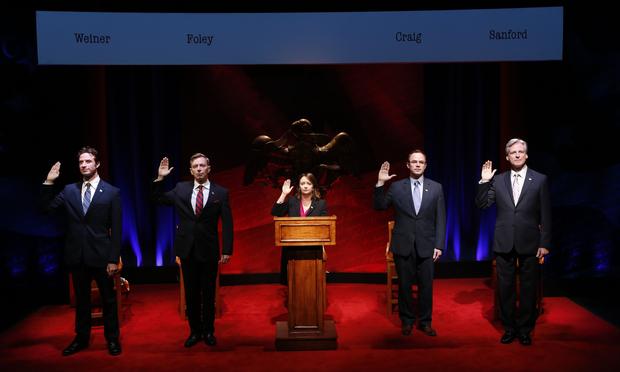Sorry for the late post about the performance Tail! Spin!, but my computer was acting weird. I’ll keep this post short, and save the bulk for our new website.

Tail! Spin! is an incredibly hilarious and well thought-out play. It satires the theme of political sex scandals, focusing around the four elected officials Mark Foley, Larry Craig, Mark Sanford, and Anthony Weiner. The outstanding bit about Tail! Spin! is that writer Mario Correa utilizes only the texts, speeches, Tweets, and Facebook messages of these “esteemed” officials. Correa beautifully puts a spin on them, creating a hysterical script. At the end of the play, you cannot help but laugh to yourself thinking, “Did they really say that?” The entire cast only consist of five actors/actresses, the four government officials plus SNL star Rachel Dratch, who acts as the women who were part of the scandals.

Tail! Spin! is an off broadway play, and stays true to the off broadway culture (an obscure theme, performed by a small cast, in a small theater, for a small audience). I do recommend going an seeing it!

